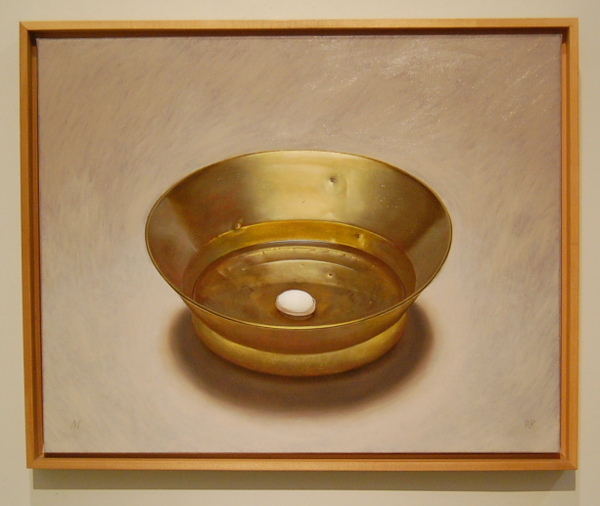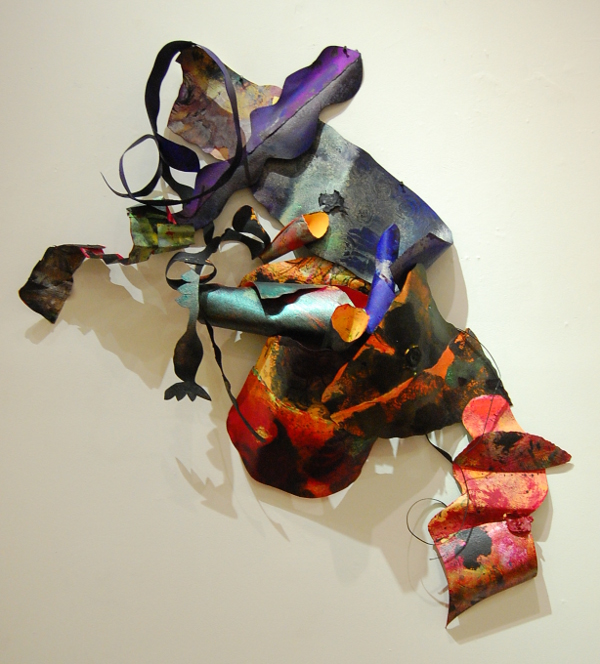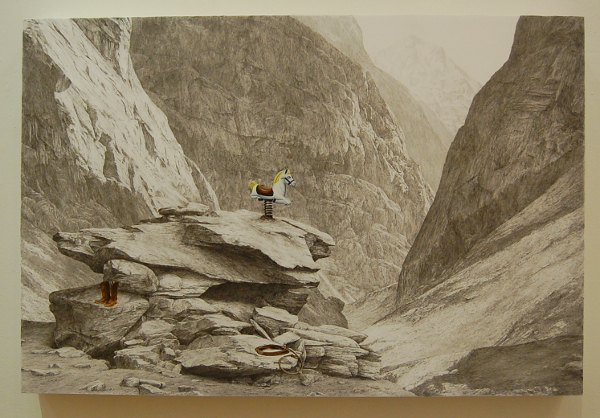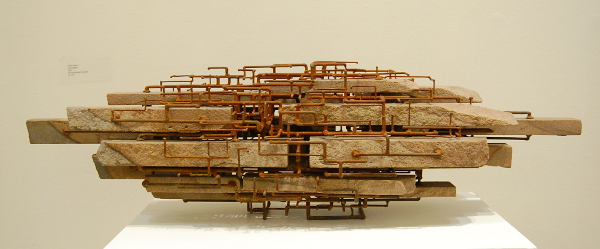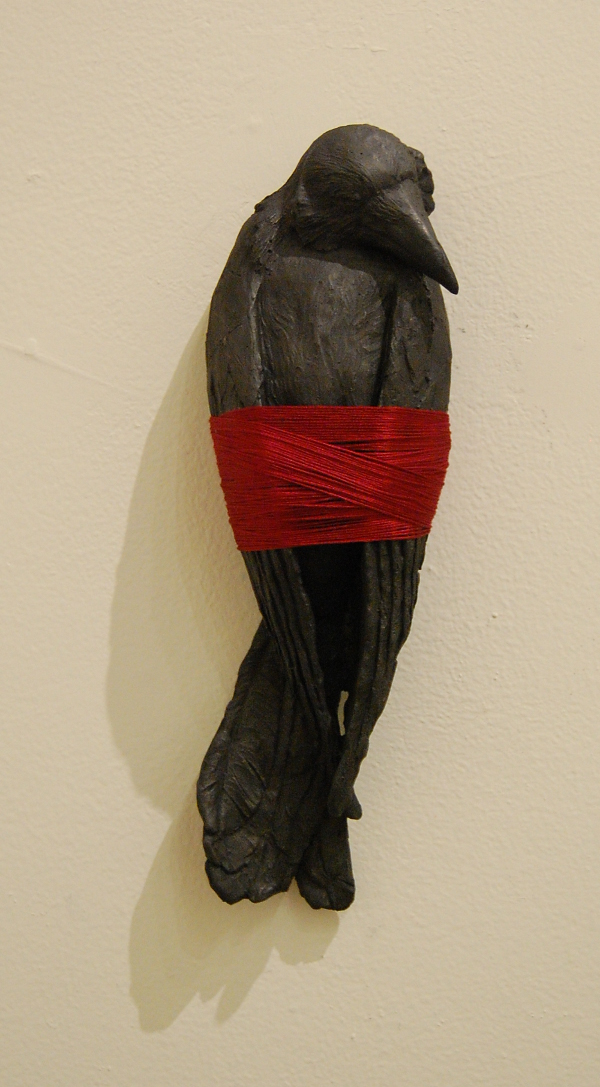
Seraphin Gallery’s mix of representation, symbolism and styles
At Seraphin Gallery, the exhibit on display in the main gallery entitled “Eons Beyond the Rib” highlights a number of female Philadelphia artists working mostly within the realms of abstraction. Although they are tied together by these loose associations, their work is really not all that similar and ranges from acrylic and graphite, to fabric, gypsum cement castings and metalwork.
One of the most captivating pieces in the show is Darla Jackson’s “Tethered.” A relatively small work, this relief sculpture depicts a raven formed from black gypsum cement and wrapped tightly with red twine. The fabric twisted around the bird’s body hold its wings from extending outward, and this symbolic image of a flying animal unable to do what it does naturally offers us insight into what keeps us from achieving what we desire. The texture of the feathers and the details of the bird’s closed eyes and beak are quite haunting, and the realism is as beautiful as it is unnerving.
Martha Meyer Erlebacher, “The Cosmogonic Egg.”
Martha Meyer Erlebacher’s “The Cosmogonic Egg” is also steeped in true-to-life representation, but through oil paint instead of sculpture. A golden bowl rests with a shallow layer of clear water inside. In the middle, a white egg sits half submerged in the water. While the rendering is entirely realistic, the scene itself is strange and purposeless, seemingly only a microcosmic metaphor for the birth of the universe or the ongoing circle of life.
Barbara Bullock, “Walking in Shallow Water.”
Brass branches fused with silver soldering by Wendy Gordon mimic the colors of Erlebacher’s painting. At a distance, they appear merely like the spindly, fanning photosynthetic structures of trees, but their metallic composition becomes clear up close. Across from Barbara Bullock’s “Walking in Shallow Water,” which is rounded and loose in its construction, multicolored and wholly abstract, these images seem to act as three-dimensional counterweights to one another.
Phillip Adams, “Lost Cowboy.”
In Gallery II, a number of other artists represented by Seraphin show pieces of a different ilk that offer different fare from the primary exhibit. Phillip Adams’ “Lost Cowboy” presents the scene of a stony, gray canyon in which the only colored elements are a pair of empty boots, an abandoned lasso and a playground-style horse on a spring. Both nostalgic for the innocence of youth and surrounded by the hard realities of life, we are met with both the merriment and the emptiness that comes with life and its many varied phases.
Gustavo Actis, “Erosion.”
Gustavo Actis provides a similarly stony object that at first appears like shards of wood due to its brownish coloration and rusted metal fixtures. In reality, the central parts are composed of sandstone, and the oxidized metal frameworks emerge from the earthen base like the skeletons of skyscrapers or long-abandoned industrial ruins.
These and many other images converse and connect with one another at Seraphin Gallery. The current exhibits will be on view through January 19.
Seraphin Gallery is located at 1108 Pine St., Philadelphia; [email protected]; seraphin.squarespace.com.
Recent Content
-
Artsarticle ·
-
Artsarticle ·
-
Artsarticle ·
